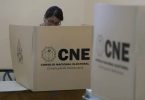Received February 12, 2020; accepted February 13, 2020
Frontiers of Medicine (2020)
COVID-19 control in China during mass population movements at New Year
The effectiveness of quarantine and isolation determine the trend of the COVID-19 epidemics in the final phase of the current outbreak in China
Biao Tang, Fan Xia, Sanyi Tang, Nicola Luigi Bragazzi, Qian Li, Xiaodan Sun, Juhua Liang, Yanni Xiao, Jianhong Wu
To appear in: International Journal of Infectious Diseases
Received Date: 18 February 2020
Revised Date: 4 March 2020
Accepted Date: 6 March 2020
FRAGMENTO:
“Highlights
Since January 23rd 2020, stringent measures for controlling the novel coronavirus epidemics have been enforced and strengthened in mainland China
Most infected cases have been quarantined or put in suspected class, which has been ignored in existing models.
Results of our model show that the trend of the epidemics mainly depends on quarantined and suspected cases.
It is important to continue enhancing the quarantine and isolation strategy and improving the detection rate in mainland China.
Summary
OBJECTIVES: Since January 23rd 2020, stringent measures for controlling the novel coronavirus epidemics have been gradually enforced and strengthened in mainland China. The detection and diagnosis have been improved as well. However, the daily reported cases staying in a high level make the epidemics trend prediction difficult.
METHODS: Since the traditional SEIR model does not evaluate the effectiveness of control strategies, a novel model in line with the current epidemics process and control measures was proposed, utilizing multisource datasets including cumulative number of reported, death, quarantined and suspected caSES.
RESULTS: Results show that the trend of the epidemics mainly depends on quarantined and suspected cases. The predicted cumulative numbers of quarantined and suspected cases nearly reached static states and their inflection points have already been achieved, with the epidemics peak coming soon. The estimated effective reproduction numbers using model-free and model-based methods are decreasing, as well as new infections, while new reported cases are increasing. Most infected cases have been quarantined or put in suspected class, which has been ignored in existing models.
CONCLUSIONS: The uncertainty analyses reveal that the epidemics is still uncertain and it is important to continue enhancing the quarantine and isolation strategy and improving the detection rate in mainland China”
SARS to novel coronavirus – old lessons and new lessons
Brian McCloskey1 and David L. Heymann
Abstract
The response to the novel coronavirus outbreak in China suggests that many of the lessons from the 2003 SARS epidemic have been implemented and the response improved as a consequence. Nevertheless some questions remain and not all lessons have been successful. The national and international response demonstrates the complex link between public health, science and politics when an outbreak threatens to impact on global economies and reputations. The unprecedented measures implemented in China are a bold attempt to control the outbreak – we need to understand their effectiveness to balance costs and benefits for similar events in the future.
PUBLISHED: Epidemiology and Infection 148, e22, 1–4. https://doi.org/10.1017/ S0950268820000254
Received: 29 January 2020
Protecting Health Care Workers during the COVID-19 Coronavirus Outbreak –Lessons from Taiwan’s SARS response
Jonathan Schwartz1 , Chwan-Chuen King2 , and Muh-Yong Yen3
Abstract
During major epidemic outbreaks, demand for health care workers grows even as the extreme pressures they face cause declining availability. We draw on Taiwan’s SARS experience to argue that a modified form of Traffic Control Bundling protects health care worker safety and by extension strengthens overall COVID-19 epidemic control.
Published by Oxford University Press for the Infectious Diseases Society of America







